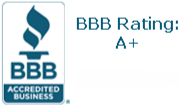FREQUENTLY ASKED QUESTIONS
-
What is mold?
Mold is a ubiquitous, microscopic organism that exists both indoors and outdoors. As a type of fungus, molds, along with yeasts and mushrooms, play a crucial role in decomposing dead materials and recycling nutrients in the environment. To thrive and reproduce, molds require two fundamental elements: a source of nourishment, which can be any organic material like leaves, wood, paper, or soil, and moisture. As molds feed on organic matter, they gradually deteriorate the surfaces they inhabit. In some instances, new molds can develop over old mold colonies. Visible mold growth often manifests as discoloration, appearing in various hues like green, gray, brown, black, white, and more. Molds disperse countless lightweight spores into the air as part of their reproductive cycle.
-
Should I be concerned about mold in my home or building?
Absolutely. Extensive indoor mold contamination can lead to persistently high levels of airborne spores. Prolonged exposure to elevated spore levels can result in sensitization and the development of allergies or other health issues. Additionally, mold growth can harm your belongings, such as carpets, furniture, and cabinets. Damp closets may cause clothing and shoes to become soiled. Over time, unchecked mold infestations can inflict serious damage on the structural integrity of your property.
-
How much mold can make me sick?
The impact of mold on health varies among individuals. Some people may experience health problems, including asthma attacks or other symptoms, with exposure to relatively low mold spore concentrations. For others, symptoms may only manifest at much higher exposure levels. Nevertheless, indoor mold growth is undesirable and unhygienic. If you can see or smell mold in your home or building, it's crucial to address the issue by identifying and eliminating excess moisture and by cleaning up and removing the mold. Consider consulting a professional before attempting to tackle a mold problem on your own.
-
What symptoms are commonly seen with mold exposure?
Molds can induce health effects through inflammation, allergies, or infections. Allergic reactions, often resembling hay fever, are the most common responses to mold exposure. Common symptoms reported by individuals exposed to mold, either individually or in combination, include:
- Eye Irritation, Such as Burning, Watery, or Reddened Eyes
- Dry, Persistent Cough
- Irritation of the Nose or Throat
- Skin Rashes or Irritation
- Respiratory Issues, Such as Wheezing, Breathing Difficulty, and Shortness of Breath
- Nasal and Sinus Congestion
It's worth noting that mold cases have occasionally been associated with headaches, memory problems, mood swings, nosebleeds, body aches and pains, and fevers, although their precise cause remains uncertain.
-
How am I exposed to indoor molds?
Mold exposure is a part of daily life, and everyone encounters some level of mold on a regular basis without evident harm. Mold spores are commonly found in indoor air, with the majority originating from outdoor sources. Health problems related to mold primarily arise when spore concentrations are notably high, and individuals inhale a significant quantity of them. This situation typically occurs when active mold growth occurs within a home, office, or school environment. Additionally, exposure can occur through direct contact with contaminated materials or by consuming contaminated food.
Contact Us
Reach Out To Us
For any further questions or concerns regarding mold and its impact on indoor environments, please don't hesitate to reach out to us.
Phone:
(877) 932-7177
Available for 24 hour emergency services.
- Mon - Fri
- -
- Sat - Sun
- Closed
Contact Us
We will get back to you as soon as possible
Please try again later









